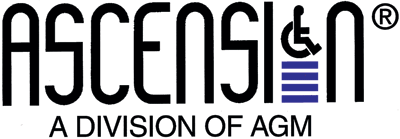Vertical Wheelchair Lifts: Specifying for Safety, Accessibility and Building Needs
ENVIRONMENTAL RESPONSIBILITY
With owners and designers increased attention to long product life cycle and reducing the possibility of product obsolescence and eventual landfill waste, manufacturers generally provide information on their attention to Green issues. Some prevent landfill waste through a lift buyback program where used lifts are purchased from customers, reconditioned and re-sold at a discounted price. This program reuses a valuable piece of equipment that otherwise may have been discarded, while allowing a greater number of people to gain accessibility.
For those designers calculating LEED® points, a typical higher-end lift uses 39 percent recycled steel in its construction. Operating a lift does not require high amounts of energy. One manufacturer reports, for example, that each operation uses the same as a microwave oven or blow dryer. To determine energy consumed for operation, specifiers should consult the electrical requirements section in each product's specifications.
DRIVE SYSTEMS
- Most manufacturers' lifts have a capacity of 750 pounds [341 kg], although some have a capacity of only 500 pounds [227 kg]. Lifts rated for 500 pounds might not lift today's battery-operated wheelchairs or scooters which can be quite heavy.
- Typical vertical speed ranges from 7 feet per minute [2.1 meters per minute] to 17 feet per minute [5.2 meters per minute].
- Vertical travel capabilities of different models range from 12 inches [304 mm] to 72 inches [1829 mm] maximum lifting height. Stage heights vary, but most stages in public facilities do not exceed 60 inches.
CODE REQUIREMENTS (See ADA Compliance, page 3)
Major producers of vertical wheelchair lifts manufacture their products to comply with ADA standards, noting that they are designed and tested in accordance with the following standards: ASME A18.1, ASME A17.5, ADAAG, ANSI A117.1, and NFPA 70 (NEC). Permanently installed vertical wheelchair lifts must also comply with building code requirements. Portable vertical wheelchair lifts are exempt from the scope of both ASME A18.1 and ASME A17.1, the safety codes referenced in most building codes. Thus, portable lifts are exempt from building code requirements.
CONCLUSION
As with all design decisions, budgets are critical factors for specifiers. Safe, ADA compliant vertical wheelchair lifts are available in a wide range of prices. Will a low-cost model with a utilitarian aspect and 2-year warranty serve the client? Quite possibly yes, if the facility has very minimal use for a lift and a conscientious professional service staff. Or, quite probably no, if the facility is a convention center or school that requires the lift for a long life of multiple and demanding uses. In which case, a higher priced, higher end, ruggedly built model that also happens to be easier on the eye makes practical and budgetary sense. Concurring, Kenneth Otten, President of Dallas-based Otten Consulting Group, an accessibility consulting firm with more than a thousand clients across the United States, says, "We recommend higher-end no machine tower portable lifts exclusively because of their quality construction, ease of set-up and operation, superior maintenance record and first-class customer service." As always, design professionals should check each manufacturer's specifications for design and technical features.
|









